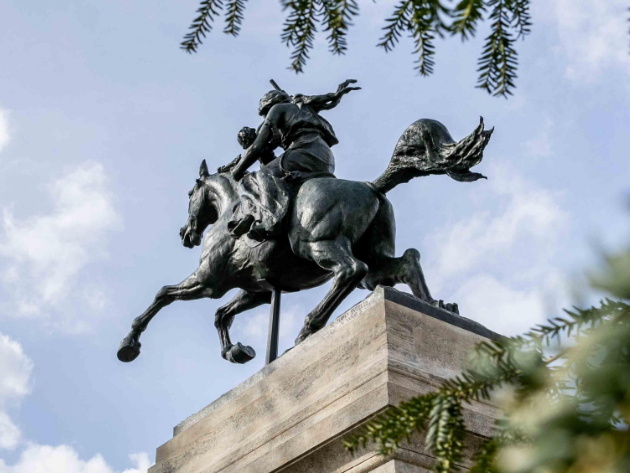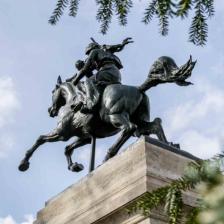
Exactly after 180 days, as planned, the restoration of the equestrian monument to Anita Garibaldi has been completed. So the iconic work dedicated to the lay heroine, Giuseppe Garibaldi's beloved companion, which dominates the Eternal City from the top of the Janiculum Hill, has returned to its original splendour.
About fifteen years after the last restoration work, renovations were carried out on both travertine and bronze surfaces to counteract the corrosion phenomena of the supporting structure, the vertical lesions along the horse's hind legs and the extensive iron oxide dripping that covered a large part of the travertine base, due to atmospheric agents and soil stress.
The stone parts were treated to eliminate biological patina, mosses and lichens, and to remove incrustations and stratifications of iron oxides, copper salts and dirt, while lesions and fractures were stuccoed and micro-filled.
The bronze parts were cleaned of surface deposits; drainage holes were removed; cracks and missing material were filled in. Work was carried out on both the inner surfaces of the horse and the iron bars.
In order to secure the monument and monitor its stability, a steel prop fitted with a ‘saddle’ was placed between the horse's belly and the bronze base on the plinth, completely reversible, with an additional expedient: shock-absorbing material was inserted between the two surfaces to prevent friction and allow for thermal expansion of the metal.
The restoration of the equestrian statue of Anita Garibaldi, the tenth completed intervention of the PNRR Caput Mundi programme, supervised by the Sovrintendenza Capitolina, is part of the fundamental historical and evocative works of the Sovrintendenza that will be completed with the reopening of the Garibaldi Ossuary Mausoleum.
Historical background
The idea of erecting a monument on the Janiculum Hill dedicated to Anita Garibaldi dates back to 1905 with the intention of inaugurating it in Rome in 1907, the centenary of the birth of the Hero of Two Worlds.
Two contests were held for its realisation but none of the proposed designs found favour with the public. In 1929, the project was taken up by Ezio Garibaldi, Giuseppe's grandson, and entrusted to the artist Mario Rutelli with the intention of inaugurating it on the 50th anniversary of Garibaldi's death, on 2 June 1932. Rutelli set to work imagining the Heroine riding a running steed like a novel Amazon, pistol in her fist.
The equestrian statue, made of bronze, is 4.5 metres high, weighs 40 quintals and represents Anita during the war events (1840) of the ‘War of the Farrapos’ for the defence of the ‘Republica Juiliana’ founded after the revolt of the province of Rio Grande do Sul against the Brazilian Empire. With a loose rein, the Heroine escaped from the imperial soldiers who had surrounded the country house in the small village of Mostazas, where twelve days earlier, on 16 September 1840, she had given birth to her first-born son Menotti Domingo. With the baby secured to her chest by a handkerchief given to her by Garibaldi, with her left hand she holds onto the mane of her steed and with her right hand she grips, brandishing it aloft, the pistol.
The travertine base, with a perimeter of 18 metres and weighing 80 quintals, holds her mortal remains. The four bronze high-reliefs decorating its sides depict episodes from the heroine's adventurous life: Anita leading the Garibaldini during the battle of Curitibanos; Anita observing the combatants; Anita searching for Garibaldi on the battlefield among the fallen soldiers; her husband carrying her dying in his arms.
 Condividi
Condividi












































